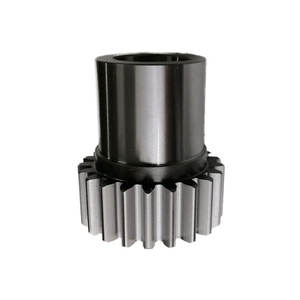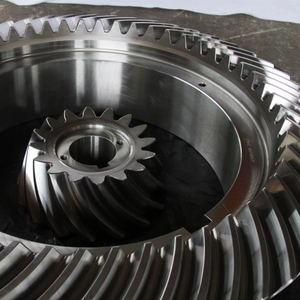PRODUCT PARAMETERS
Description
Overview of agricultural tractor gear
Gears are mechanical elements that are typically used to transmit rotational motion and force. They work by meshing teeth with each other to change speed, direction of torque, or to transfer power between multiple shafts. Gears are an integral part of mechanical engineering and are widely used in a variety of mechanical devices.
Advantages and features of agricultural tractor gear
Efficient transmission: Gears are capable of directly converting power with high efficiency and low energy loss.
Precise ratios: the desired ratio of speed and torque can be obtained by selecting gears of different sizes.
Compact: agricultural tractor gearsystems take up less space than other forms of power transmission.
High durability: well-designed gears can operate stably for long periods of time in harsh environments.
Low noise and vibration: Modern agricultural tractor gearmanufacturing technology ensures smooth operation and reduces noise and vibration.
Various types: Spur, helical, and bevel gears are available depending on the application scenario.

(agricultural tractor gear)
Specifications of agricultural tractor gear
Agricultural tractor gears are built to handle heavy-duty tasks in farming. These gears transfer power from the engine to the wheels or attachments. They must withstand high stress and operate smoothly in tough conditions. Most tractor gears use hardened steel. This material resists wear and lasts longer. Gears are heat-treated for extra strength. This reduces cracks or breaks during heavy use. Tractor gears come in different types. Manual transmissions require the driver to shift gears manually. Automatic or semi-automatic options simplify operation. Some models feature synchromesh systems. These allow smoother shifting without grinding. Gear ratios vary based on tractor size and use. Lower gears provide more torque for plowing or hauling. Higher gears enable faster speeds for transport or light tasks. Gearboxes often include multiple speed ranges. Operators switch between low, medium, and high ranges for flexibility. Modern tractors may have 12 to 24 forward gears. Some include reverse gears for maneuvering. Sealed gear housings protect internal parts from dirt and moisture. Regular oil changes keep gears lubricated. Poor maintenance leads to overheating and damage. Gears must match the tractor’s horsepower. Using undersized gears risks premature failure. Compatibility with implements like tillers or harvesters is critical. Gear teeth are precision-cut for smooth engagement. Noise during operation often signals misalignment or wear. Replacement gears should meet original specifications. Aftermarket options exist but vary in quality. Proper installation ensures optimal performance. Incorrect alignment causes uneven wear. Gear failures can halt fieldwork and increase repair costs. Farmers prioritize durability and ease of repair. Brands offer warranties to guarantee reliability. Gear designs balance strength and weight. Heavy gears improve traction but reduce fuel efficiency. Lightweight materials are tested for agricultural use. Gear systems integrate with hydraulic systems for advanced functions. Operators check gear oil levels regularly. Contaminated oil accelerates component wear. Gear performance affects overall tractor efficiency. Smooth gear shifts reduce operator fatigue during long hours. Testing under real-world conditions ensures reliability. Custom gear configurations suit specialized farming needs.

(agricultural tractor gear)
Applications of agricultural tractor gear
Agricultural tractor gears play a critical role in farming operations. These gears adjust speed and power to match different tasks. Farmers rely on them to handle varying field conditions efficiently.
Plowing fields requires low gear settings. Low gears provide high torque. This helps tractors pull heavy implements through tough soil. Without proper gear selection, the engine might strain or waste fuel. Shifting to higher gears during lighter tasks saves energy.
Planting and seeding demand precision. Mid-range gears are often used here. These gears balance speed and control. Consistent ground speed ensures seeds are placed evenly. Uneven planting can reduce crop yields. Gear adjustments help maintain steady progress across uneven terrain.
Harvesting crops involves heavy machinery. Tractors use low gears again to tow harvesters or balers. Slow speeds prevent damage to crops or equipment. Proper gear use ensures smooth operation during critical harvest periods. Delays due to mechanical issues can impact crop quality.
Transporting goods relies on high gears. Empty trailers or light loads need less power. Higher gears allow faster travel on roads. This saves time and fuel during transport. Switching back to lower gears is necessary when carrying heavy loads uphill.
Tractor gears also control power take-off (PTO) systems. The PTO transfers engine power to attached tools. Rotating speed must match the equipment’s requirements. Incorrect gear settings can damage machinery. Proper gear use ensures tools like tillers or sprayers work effectively.
Regular maintenance of tractor gears is essential. Worn gears cause slipping or poor performance. Lubrication reduces friction and extends gear life. Farmers should check gear oil levels routinely. Timely repairs prevent costly breakdowns during busy seasons.
Gear selection impacts fuel efficiency. Using the right gear for each task cuts unnecessary fuel use. Overworking the engine in high gears strains components. Matching gear settings to the job’s demands keeps operations cost-effective.
Modern tractors feature advanced gear systems. Automatic transmissions simplify gear changes. Operators focus more on tasks than shifting manually. Even with automation, understanding gear functions remains important. Proper use maximizes productivity and equipment longevity.
Campony Introduction
Established in 2002, Shift Gear Machinery Co.,ltd. focus on metal research and mining machinery spare parts. 2 factories over an area of 13,300 square meters, based on 100+ sets of equipment, our production capacity reaches 12000 Tons/Year. has passed ISO 9001 quality managment system certification in 2008.
Our mainly products are dragline excavator spare parts,rotary kiln spare parts, large modulus gear (gear shaft), gearbox ect. 40+ patents with over 45 years experience to help focus on improve the service life of spare parts. We belive that more than 80% reason of mechanical parts’ working life depends on hot processing (steel making/forging/casting/welding/heat treatment). Eight material engineers will control the quality from the original resource.
If you are interested, please feel free to contact us.
Payment
L/C, T/T, Western Union, Paypal, Credit Card etc.
Shipment
By sea, by air, by express, as customers request.
5 FAQs of agricultural tractor gear
What is the main purpose of agricultural tractor gears? Tractor gears transfer power from the engine to the wheels or attached equipment. They let operators control speed and torque based on tasks like plowing or hauling. Proper gear selection ensures efficient fuel use and reduces strain on the engine. Different gears handle different loads and terrain types.
How often should tractor gears be inspected? Check gears every 50 hours of use or before heavy-duty tasks. Look for wear, cracks, or misalignment in gear teeth. Listen for unusual noises during operation. Regular inspections prevent breakdowns and costly repairs. Follow the manufacturer’s maintenance schedule for best results.
What causes tractor gears to wear out quickly? Poor lubrication is a common cause. Dirt or debris entering the gear system speeds up damage. Overloading the tractor or using the wrong gear for a task adds stress. Incorrect gear shifting habits also contribute. Fixing these issues early extends gear life.
Can damaged tractor gears be repaired or must they be replaced? Minor damage like surface scratches can sometimes be polished out. Cracked or chipped gears usually need replacement. Repair costs often outweigh benefits for severe damage. Always consult a technician to assess the problem. Using damaged gears risks further mechanical failure.
What type of lubricant works best for tractor gears? Use high-viscosity oils or grease recommended by the tractor manufacturer. Lubricants must resist high pressure and extreme temperatures. Check lubricant levels before each use. Replace old or contaminated lubricant promptly. Proper lubrication reduces friction and prevents overheating.

(agricultural tractor gear)
REQUEST A QUOTE
RELATED PRODUCTS
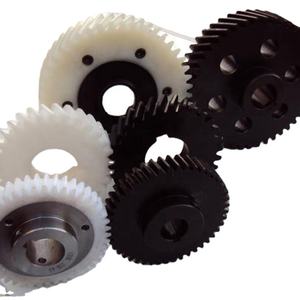
TILI New Type Mini Excavator Track Drive Motor Hydraulic Motor With Worm Drive Gearbox Patgent Gearbox For Concrete Mixer
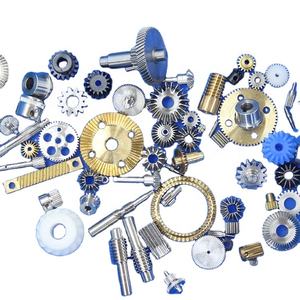
Precision Worm Gear And Shaft Made In China Gear Wheel Straight Tooth Gear Worm Wheel,Worm Gear,Gear Worm Gear
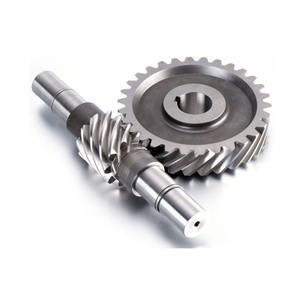
H B series High quality Right Angle Unique speed reducer helical gearbox gear box
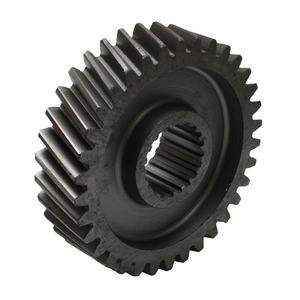
High-Precision CNC Machining For Aluminum Gear Parts. Professional And Fine Aluminum gear CNC Turning For Mechanical Equipment

OEM Steel Gear Pinion Metal Transmission Helical Gear
